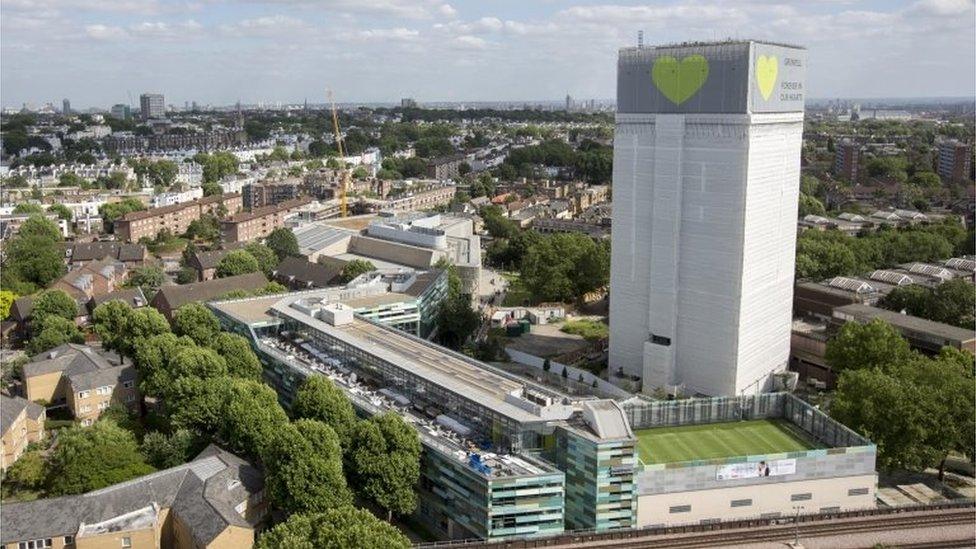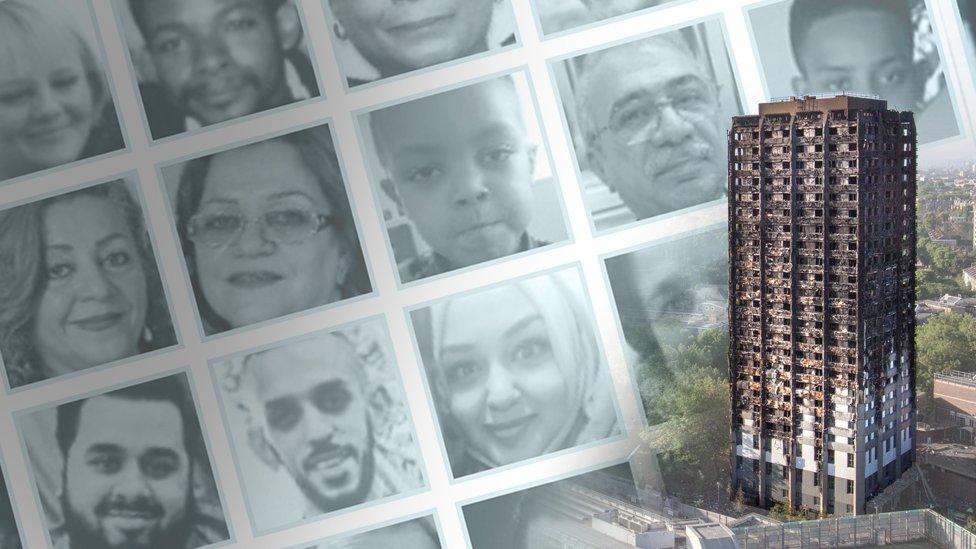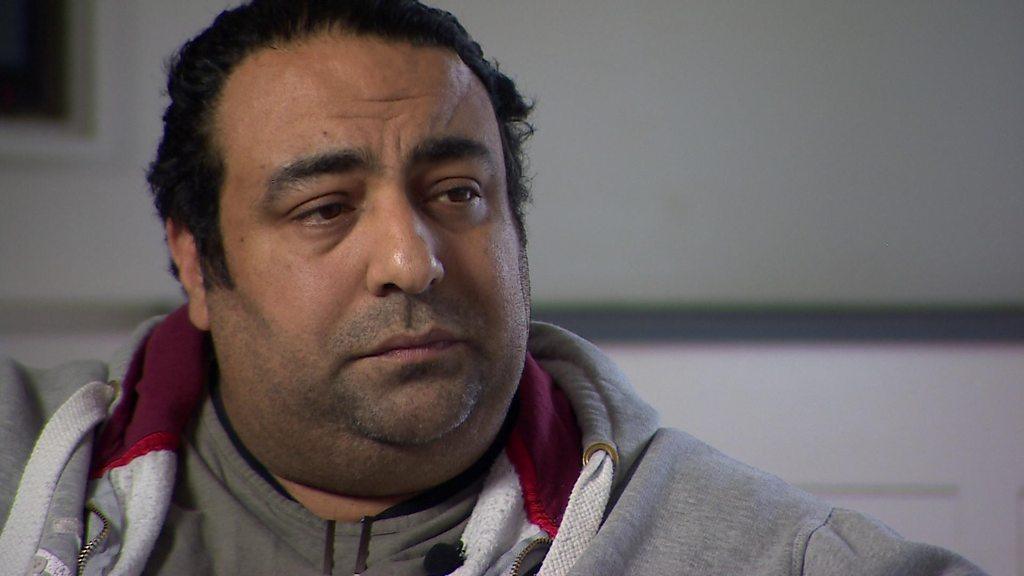Grenfell: Police helicopters 'did not make fire worse’, says watchdog
- Published

Claims the use of police helicopters at the Grenfell Tower fire made the flames worse and encouraged residents to head to the roof in the hope of rescue have been rejected by the police watchdog.
Its report says no helicopter came close enough to cause downdraft which might have fanned the flames.
It also says there was no evidence that 999 call handlers suggested helicopters might be able to rescue residents.
The fire at the 24-storey tower in west London killed 72 people in June 2017.
The Independent Office for Police Conduct (IOPC) has released an 80-page report following an investigation into the fire.
It was prompted by a complaint made three years ago by Nabil Choucair, who lost six members of his family at Grenfell Tower.
Nabil Choucair says people should have been evacuated earlier
The complaint said that residents believed the helicopters they could see from their windows had been sent to rescue them from the roof of the building.
It also raised concerns that "prop wash" from the helicopters allowed the flames to spread more quickly.
The investigation examined calls between trapped residents and 999 handlers, as well as the movements of residents higher up the tower, to establish whether they had been motivated by the belief they would be rescued.
People stuck on the upper floors of the Kensington tower block begged call handlers for an air rescue, after seeing police helicopters flying nearby during the fire.
'Residents' desperation'
Police helicopters were almost continuously present close to the tower between 01:44 BST on the night of the fire and 16:05 BST the following afternoon.
The report found that "desperation", led some residents, who were "completely trapped" to mistakenly believe they could be rescued by police helicopter.
However, the helicopters sent by the National Police Air Service (NPAS) were not equipped for rescue, and rather were monitoring the scene for officers and other emergency responders on the ground.
The IOPC found that the deployment of the helicopters was justified.
It said the way some handlers managed calls from those in the building was "unclear" but it added that residents were not told to move to another floor for rescue.
The conclusion reads: "A small number of people in Grenfell Tower, who were already of the belief that they were completely trapped, out of desperation and being aware of helicopter presence, developed the mistaken belief that a helicopter rescue was a possibility."
It also said "films are likely to have influenced people's belief in what the helicopters can do" and recommended that 999 staff should be trained to explain to the public that police helicopters were not capable of rescuing them.
It also concluded that "none of the helicopters flew close enough to the tower for their rotor wash to have worsened the fire".
IOPC regional director Sal Naseem said: "The recommendations we have made and which have been accepted aim to ensure that call operators communicate, to people who find themselves in similar horrific and life-threatening situations, the reality of the choices they have."
A public inquiry into the fire is also being held and it is currently in its second phase.
- Published30 May 2018

- Published29 October 2019

- Published29 November 2017
